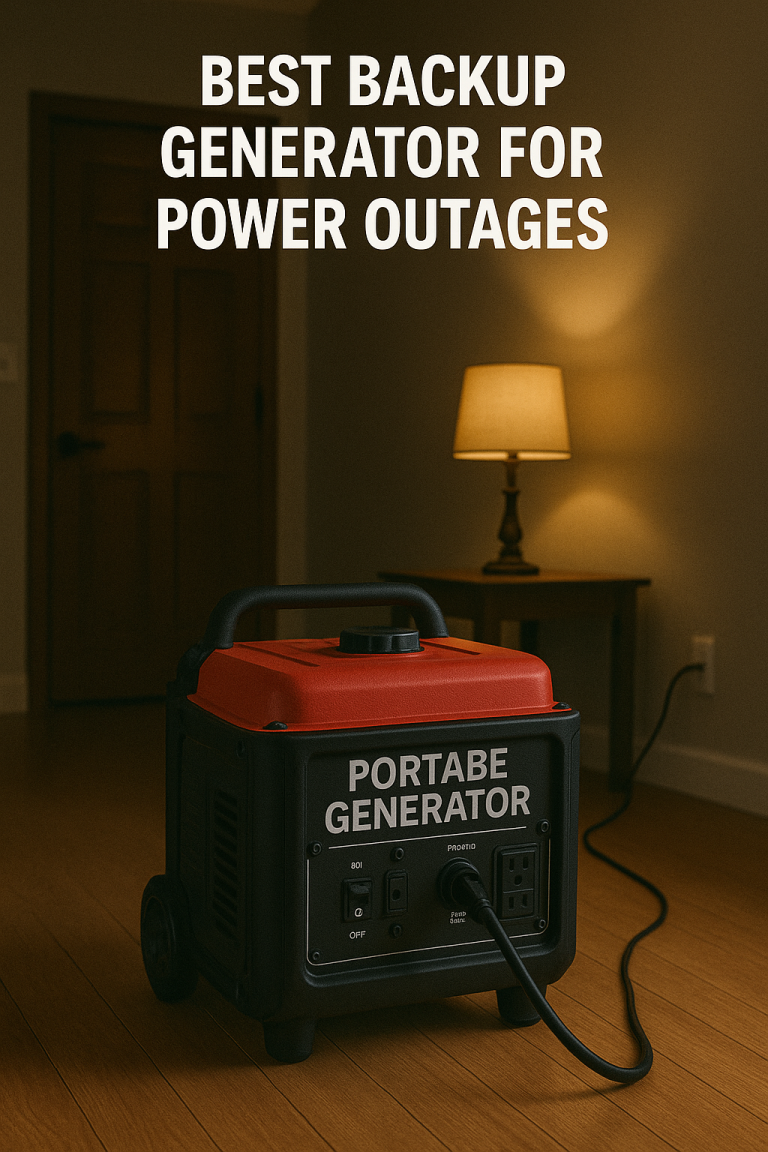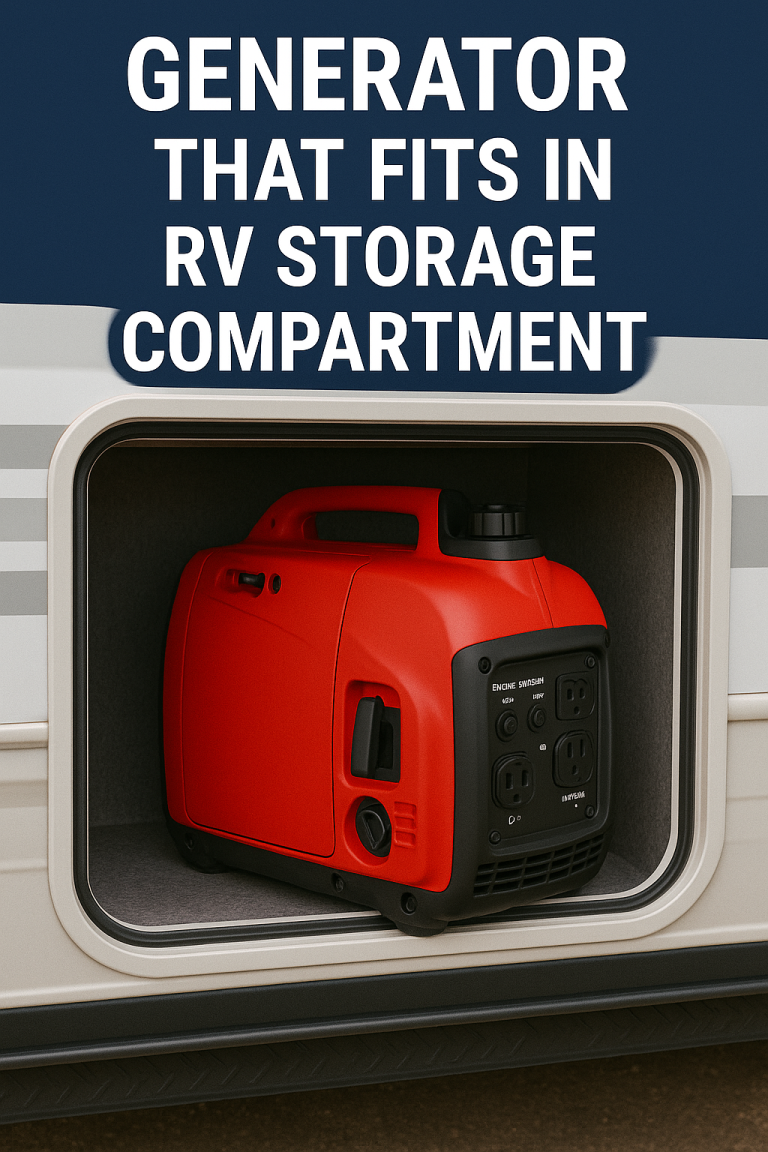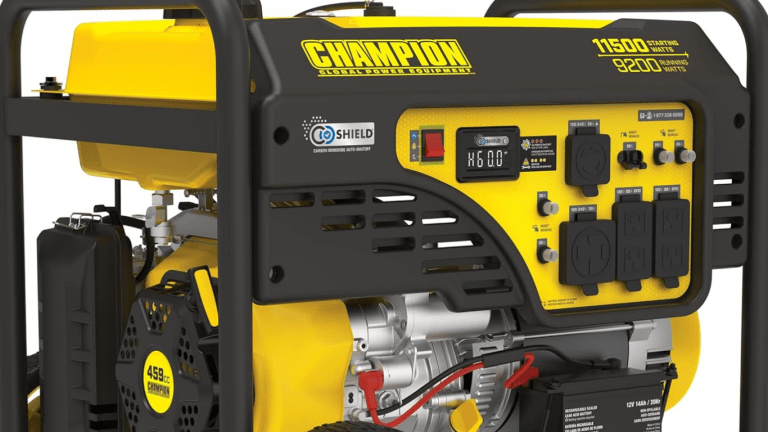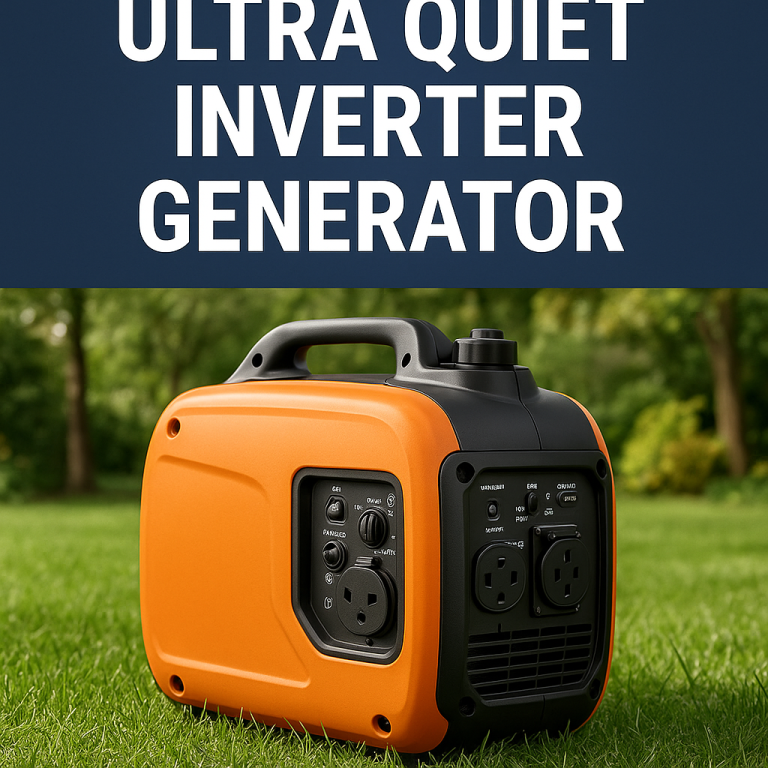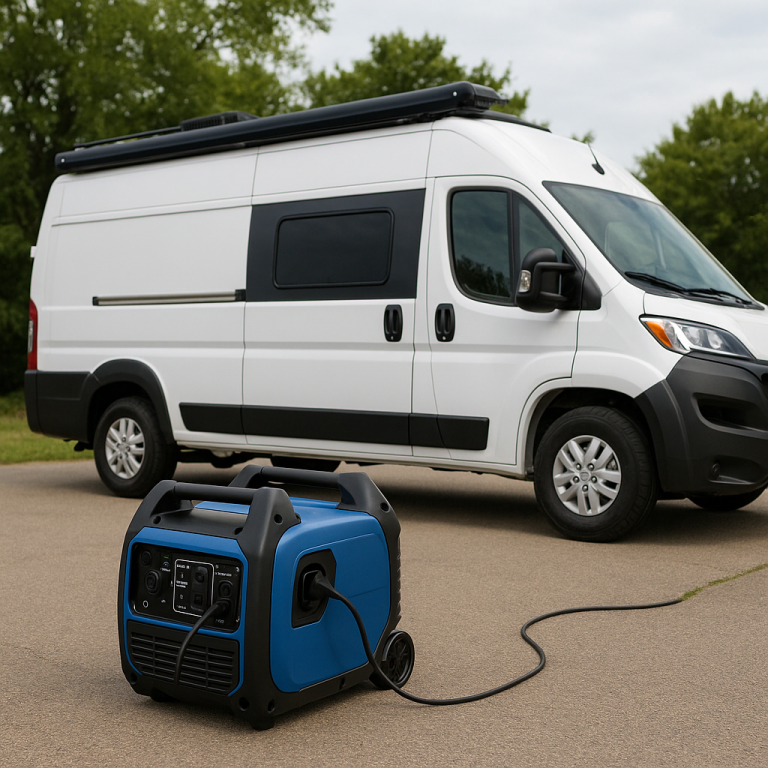Portable Generator for Food Truck – Reliable Power for Mobile Kitchens
If you’re running a food truck, you already know that power is everything. From refrigeration to grills, lights to blenders, your entire operation depends on a steady supply of electricity. But when you’re mobile — parked at festivals, curbside spots, or remote events — power isn’t always easy to find. That’s where a portable generator for your food truck becomes your most essential business partner.
The right generator can keep your business running smoothly, your food fresh, and your customers happy. But not all generators are up to the job. You need a unit that delivers enough power, runs quietly, and fits into your setup without getting in the way.
In this guide, we’ll show you how to choose the best portable generator for your food truck, what wattage you need, and the must-have features to keep your business powered and professional.
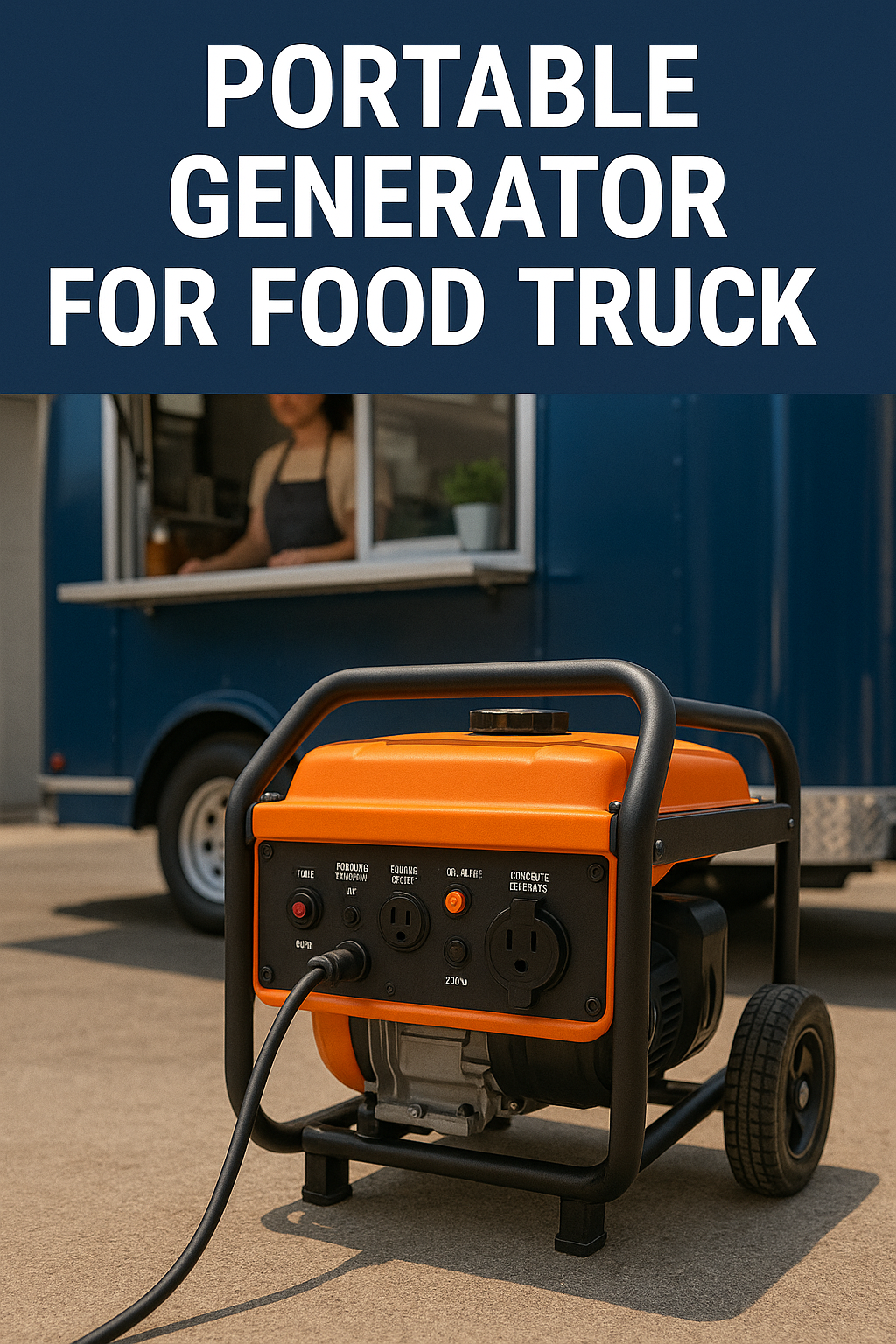
Why a Generator Is Critical for Food Trucks
Food trucks are full-fledged commercial kitchens on wheels. That means multiple appliances running at once, often for long hours, and in various locations without guaranteed access to shore power.
A reliable generator helps you:
- Power all your kitchen equipment — fridges, fryers, freezers, warmers, coffee machines, and more
- Maintain food safety by keeping refrigeration running all day
- Provide lighting, POS systems, and music for an inviting atmosphere
- Run independently of the venue or local infrastructure
- Avoid power outages that could shut your business down mid-service
Without it, you’re stuck relying on external sources — and that means less control, higher risk, and potential revenue loss.
How Much Power Do You Need?
Before you buy a generator, you need to calculate how much wattage your food truck requires. List every appliance and piece of equipment you’ll be using. Then, note both the running watts and starting watts for each item. Starting watts are typically higher because of the power surge needed to turn things on.
Common appliances in food trucks include:
- Refrigerators: 600–1000 watts
- Freezers: 700–1500 watts
- Fryers or griddles: 1500–3000 watts
- Coffee makers: 800–1200 watts
- Blenders: 300–1000 watts
- Lights: 50–300 watts
- POS system/tablet: 50–100 watts
- Fans or air conditioning: 1000–3000 watts
Add all your running watts, then factor in the highest starting wattage from your list. This gives you your total generator size requirement. Most food trucks need a generator with 5000 to 8000 running watts, but larger operations may need 10,000+ watts to safely power everything.
Best Type of Generator for Food Trucks
When it comes to powering a food truck, you have a few options — but one stands out:
Inverter Generators (High-Wattage Models)
Inverter generators are quieter, more fuel-efficient, and deliver clean electricity that’s safe for sensitive equipment like your POS system or digital controls.
Modern high-watt inverter generators offer:
- Cleaner power (low harmonic distortion)
- Eco-mode for fuel savings during light loads
- Quieter operation, especially important in customer-facing environments
- Smaller footprints for easier storage inside or mounted outside the truck
If you only need 3000–5000 watts, an inverter generator is ideal. For larger power demands, you’ll want to look at heavy-duty inverter or open-frame generators with enough muscle for full-scale operations.
Dual-Fuel Generators for Fuel Flexibility
A dual-fuel generator can run on either gasoline or propane, giving you flexibility depending on what’s available or more cost-effective.
Propane:
- Burns cleaner
- Is easier to store for long periods
- Can run longer with larger external tanks
Gasoline:
- More widely available
- Often delivers slightly higher wattage output
If you want versatility and longer runtime, dual-fuel models are a smart choice — especially if you’re operating long hours or in remote locations.
Features to Look For in a Food Truck Generator
High Wattage Output
Choose a generator that meets or exceeds your peak power needs. You’ll want a buffer above your total calculated load to avoid overloading, especially during appliance startups.
Quiet Operation
Your generator will likely be running near customers or event crowds. Look for units rated under 70 decibels to avoid disrupting the customer experience.
Long Runtime
Your food truck doesn’t shut down after two hours. Choose a generator that can run 8 to 12 hours on a full tank — or longer if connected to an external propane source.
Compact and Portable Design
Space is limited in food trucks. Select a unit that’s compact enough to fit your storage area or one that can be mounted securely outside. Portability (wheels and handle) is also useful for event setups.
Clean Power (Low THD)
Low total harmonic distortion (under 5%) protects your sensitive electronics — like digital fryers, smart thermostats, and POS systems — from power surges or interference.
Electric Start
Avoid pull-starting your generator during the lunch rush. An electric start or remote start adds serious convenience, especially if you’re operating solo.
Safety Features
Look for models with low oil shutoff, overload protection, and CO monitoring. These features protect both your equipment and the people working around the generator.
Generator Placement and Ventilation
Generators produce carbon monoxide and heat, so ventilation is critical. Always place your generator:
- Outside the truck, in a well-ventilated area
- At least 5–10 feet from doors, windows, or vents
- In a weather-safe compartment if possible
- Away from customer service areas to minimize noise and smell
Never run a gas or propane generator inside the food truck, even with a vent. For enclosed installations, consider a built-in generator system with professional ventilation and safety features.
Maintenance Tips for Food Truck Generators
Your generator is a critical piece of equipment — treat it that way. Here’s how to keep it running strong:
- Change the oil regularly, especially during peak season
- Inspect and clean air filters
- Check spark plugs and fuel lines
- Run the generator at least once a month, even during downtime
- Use a fuel stabilizer if storing gasoline
- Secure your generator during travel to avoid damage
Keeping your generator in top shape reduces the risk of failure during busy hours — and that means fewer lost sales and happier customers.
Final Thoughts: Power Up Your Food Truck Business
A portable generator for your food truck isn’t just a piece of gear — it’s the engine behind your entire operation. Without power, your fridge stops cooling, your grill goes cold, and your lights go out. But with the right generator, you can park anywhere, serve anything, and keep customers coming back for more.
To recap:
- Calculate your total wattage needs — and add buffer for startup surges
- Choose a 5000 to 8000+ watt generator depending on your setup
- Prioritize quiet operation, clean power, and long runtimes
- Consider dual-fuel models for flexibility
- Maintain your generator like your business depends on it — because it does
When your power is dependable, your food is consistent, and your truck is always ready to serve — that’s the recipe for mobile success. This job site portable generator is what you’re looking for. Click the link below:

maXpeedingrods 5500W Inverter Generator Gas Powered, Electric Start, EPA Compliant, Compact and Lightweight for Home Backup Jobsites Woodwork, RV Ready

